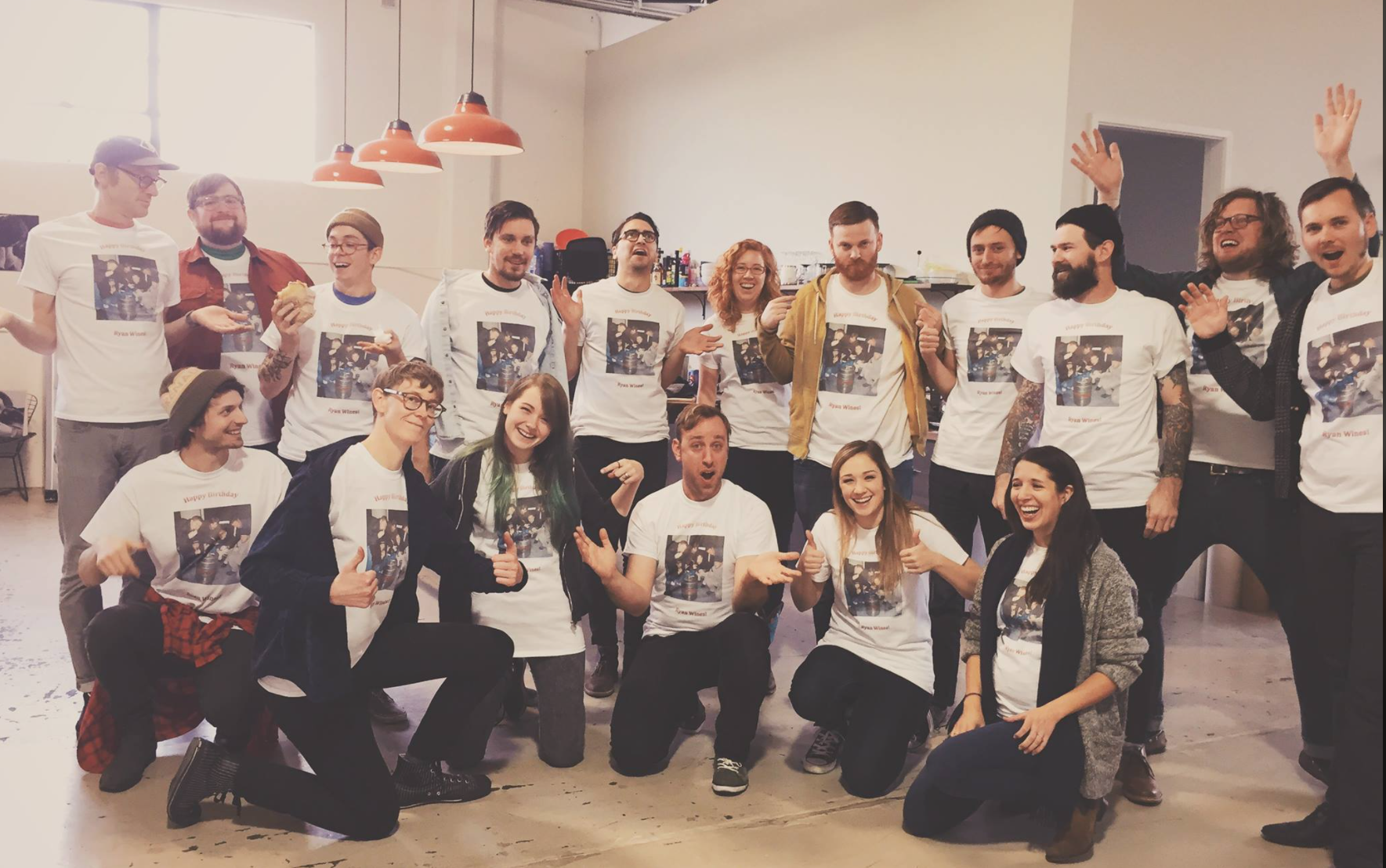**This piece was originally published by The Portland Business Journal on December 6, 2023.
Put this on blast: in-person work is an X-factor and a huge competitive advantage – today more than ever.
While there’s no one-size-fits-all solution for every individual, team and organization, I’ve come to terms with the fact that some form of in-person connection (ie: people working in the same room together), whenever feasible, offers a huge advantage for individuals, teams, and organizations of all shapes and sizes. It’s an absolute x-factor. Perhaps it’s kind of like broccoli: you may not always like it, but it’s hard to deny broccoli is good for you.
To be clear, I’m not here to debate remote work versus in-person, versus hybrid or anything like that. All options are reasonable to explore and try, depending on the role, function, core values, workplace culture, etc. I’m simply making a case for the tremendous upside in-person connection has on teams and organizations.
We’re one year into our latest evolution of a hybrid work concept at my company and I’ve learned a ton. While 30% of our staff work remotely spread across the country, 70% of our staff are based in Portland, Oregon where our HQ is located. These folks work in-office, in-sync with their respective team one day a week, while some choose to come in more frequently, and leaders work in-office 3-4 days a week. Teams sync-up for weekly meetings and other internal rhythms, while our distributed (aka remote) team members Zoom-in regularly.
What I’ve observed over the past year has been nothing short of mind blowing. Every day, without exception, I witness some kind of “magic moment” – and it’s the kind of stuff that can’t easily happen working remote through screens. I observe people going out for coffee, taking walks and having lunch together. I witness teammates tackling challenges in an organic, impromptu manner – whether in passing, in a conference room or in the kitchen. Perhaps the best part – there’s unexpected social, creative and intellectual “collisions” regularly happening before and after meetings, or while making coffee – magic moments that aren’t possible working remote through glowing screens. Once you see it in action, you can’t unsee it. It’s pure magic. It’s special. It’s a clear competitive advantage. And as a leader/nerd, it’s super cool to witness.
Apparently I’m not the only one feeling the impact of this “together is better” phenomenon. A recent MIT research study found that social bonds between co-workers is critical for innovation, creativity and team chemistry — and is best cultivated by some measure of IRL, in-the-same-room connection. Whether working in-office once a week, once a month, or even once a year, in-person connection creates powerful opportunities to deepen chemistry, build trust among teammates, boost creativity and innovation, and create a special kind of magic that simply isn't possible working through glowing screens and messaging apps.
An organization's purpose and values can be a helpful compass for finding the best approach. My company is a Certified B Corp and our stated purpose is to “Be Community.” In 2023 alone, our people got on airplanes every month, taking more than 30 in-person trips across the globe, traveling far and wide, to build authentic face-to-face connections, including more than 300 in-person client meetings. Throughout the year we threw parties, hosted learning events, community and industry mixers, plus all of the typical kinds of internal happy hours, quarterly All Hands, and annual retreats you can imagine.
Real human connection is the center of who we are. And objectively speaking, we’ve experienced healthy year-over-year growth in 2023. The impact is real.
Remember that old saying, “there's no i in team”? Contemporary business genius Reid Hoffman once quipped, “No matter how brilliant your mind or strategy, if you’re playing a solo game, you’ll always lose out to a team." If one’s primary case for remote work is all about you – your individual comfort, your commute, your preferences or personality type, your productivity, your boundaries, and all of your personal needs – I would encourage you to take a beat to reflect.
Sure, you’ve eliminated your commute and can work in sweatpants, run errands and take personal appointments with less hassle. But what kind of chemistry and energy are you building with your team? How many unexpected creative and intellectual collisions are happening before and after meetings, or perhaps in the kitchen? Are you able to have passionate conversations and share new ideas on the fly? Are your new hires learning by osmosis – by just being in the same room and overhearing conversations? Are you satisfied living within the limits of a glowing screen, supported by digital calendar reminders telling you when to talk, who to talk to, and what to talk about?
If you truly believe in the impact derived from building strong teams and culture, consider the possibility that what's best for someone individually might not always be what’s best for the team. The world’s highest performing teams always have a “team first” mindset. "Talent wins games, but teamwork wins championships." - Michael Jordan
There's also something to be said about growing a career through in-person connection. Whether we're talking about co-workers, clients, bosses, industry networking, future opportunities or the broader community, there're so many advantages to getting into the same room with people. Yes, especially early in one’s career – but IRL connection is equally impactful for seasoned professionals too.
As teams and companies emerge from a long season of a pandemic-induced remote work world, perhaps the most important concept that needs to be put on blast is the tremendous advantage of getting into the same room with other humans. While there’s no prescriptive, right or wrong way to do it, it’s a clear competitive advantage, today more than ever.
So simple, yet so easy to miss in a modern world.
- RW
**This piece was originally published by The Portland Business Journal on December 6, 2023.









